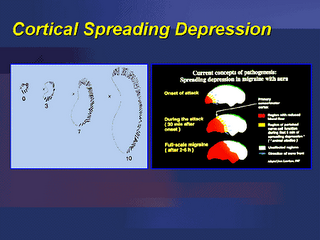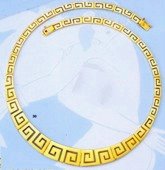Answers to How and Where - Part 3

Question 5 ~ I had an Anchorite's vision.
Julian of Norwich circa 13342-1413.
The greatest English mystic, occupied a cell adjoining the church dedicated to Julian in Norwich, as an Anchoress. We do not know her given name. At the age of thirty, suffering from a severe illness and believing she was on her deathbed, Julian had a series of intense visions, which twenty years later would be the source of her major work Sixteen Revelations of Divine Love believed to be the first book writen by a woman in the English language.
This from www.aberdeenanglican.org
Migraine auras have variously been used to explain Anchorites' visions and UFO sitings. Hildegard of Bingen who lived in Rhineland in the 12th century began to receive 'holy visions' at the age of 32 and now some neurologists attribute her descriptions of what she saw to the classic symptoms of migraine auras.
Much as I esteem Julian of Norwich and am intrigued by the possibility of UFOs; I do not ascribe religious attributes to my migraine auras. An interruption to cerebral blood flow is thought to result in cortical spreading depression. The patterns of my migraine auras are similar to this picture from
www.pulsemed.org.

They are riotous scintillating flashing black, white and silver patterns that overlay my ordinary vision and come before the head pain. The scintillating moving pattern begins as a small area of no vision, a fuzzy hole with nothing in it, from which the pattern emerges gradually spreading around my whole field of vision as shown here. As at this point there is no pain and it can be marvelled at and I can very well imagine the effect it had on a religieuse of the 12th century.
We cannot know if this is what Anchorites' visions were caused by, and I don't image they had access to the chocolate and red wine that used to be the trigger for my migraine auras. However, I can imagine from my own experience, that they believed they were seeing angels, or the majesty of the diety they worshiped. From that their own mystic insight could progress.
Julian of Norwich wrote: 'And thus I saw when we are all in peace and in love, we find no contrariness, nor no manner of letting through that contrariness which is now in us.' www.quotationsbook.com
Question 6 - I danced a Cretan circle
 These lovely clay figures of ladies dancing in a circle around a lyre player, come from Palaikastro and can be found in the Herakleion Museum in Crete. My information is from the archeological guide purchased at the museum.
These lovely clay figures of ladies dancing in a circle around a lyre player, come from Palaikastro and can be found in the Herakleion Museum in Crete. My information is from the archeological guide purchased at the museum.Many moons ago I regularly danced with a group of Circle Dancers in Dorset who practised authentic dances to recorded authentic music, and my favourite dance was Kritikos meaning 'Crete'.

A few years later, on holiday in Crete, I talked to two ladies (in English) in their jewellery shop and asked about this dance. They were excited
that their Cretan dances were danced in England, and were able to
explain the symbolic meaning of the steps. As the shop was quiet, the three of us danced together Kritikos. It is an energetic dance, but slower dances that form meanders are to be found in many cultures, but meander necklaces formed from Cretan gold, are best found in Crete, like this one from www.hellenicart.com.
This is not advertising, but acknowledgement of the source.


0 Comments:
Post a Comment
Thank you for leaving a comment ... all comments are moderated and will be published soon.
<< Home